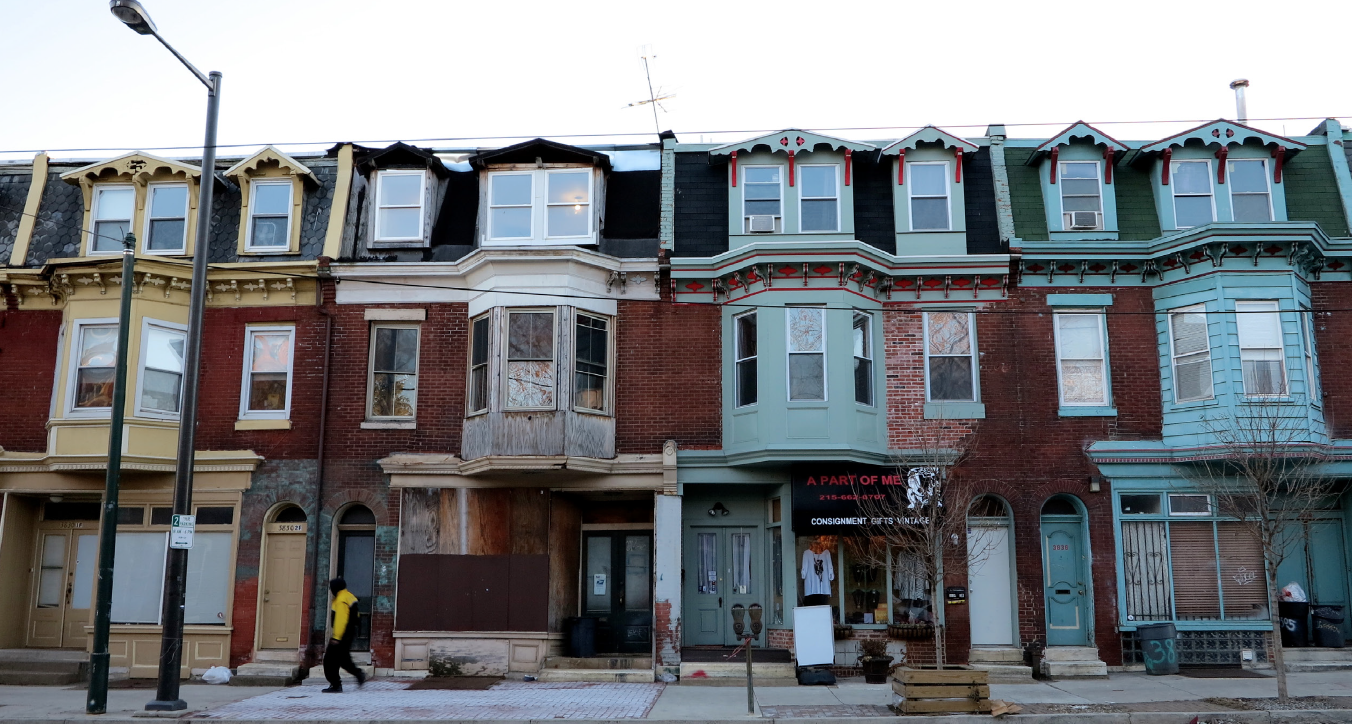Averting a Lost Decade: Rethinking an Inclusive Recovery for Disadvantaged Neighborhoods
By Bruce Katz and Mary Ellen Wiederwohl in collaboration with Accelerator for America and The Mastercard Center for Inclusive Growth
June 1, 2022

As the United States emerges from the COVID-19 pandemic, it is becoming increasingly clear that cities are entering a period of deep economic uncertainty and adjustment. The pandemic and other forces accelerated a series of disruptive dynamics, including remote work, e-commerce, and the digital transformation of health care, education, and business. Taken together these dynamics challenge the re-centering of metropolitan economies around robust downtowns that has been underway since the turn of the 21st century. The pandemic also exacerbated the shift in ownership of urban properties towards institutional and other investors and altered the landscape for small businesses, both in general and Black and brown-owned small businesses in particular. Despite positive signs of entrepreneurial dynamism, minority owned businesses remain overly concentrated in low-wage, low-growth sectors and are disproportionately likely to have fragile finances.
Given the financial investments at stake, volumes are already being written about the future of central business districts and, more broadly, the potential reshuffling of American cities and metropolitan areas from the concentration of superstar cities to a more spatially even urban order. Less attention has been paid to the possible trajectory of disadvantaged neighborhoods. A clear perspective has yet to emerge, distracted understandably by the unprecedented level of federal investments and aid made available through the American Rescue Plan and the Infrastructure Investment and Jobs Act, the Biden Administration’s unparalleled commitment to equity and the substantial commitments made by major corporations, financial institutions, and philanthropies to reducing racial disparities in the aftermath of George Floyd’s murder.
Despite these historic moves, we are uneasy about the state of urban neighborhoods and hope this paper provokes a deeper discussion about more ambitious interventions that cities must design and deliver to spark an inclusive long-term recovery, particularly absent the arrival of federal funding for structural investments in housing, childcare, or higher education. Kenan Fikri of Economic Innovation Group put it succinctly when he recently said “It’s almost a hard and fast rule of modern economic growth that absent intentionality to the contrary, it will bypass the places that need it most.” In our view, low-income neighborhoods face a series of super-sized challenges postcrisis that demand the strategic, coordinated deployment of public, private and philanthropic resources. Unless major structural changes are made, at all levels of government and across multiple sectors, the nation runs the risk of a lost decade, followed by a lost generation, with racial wealth disparities that are greater and neighborhoods that are worse off than the period that preceded the pandemic.
In many respects, we have seen this movie before. In the aftermath of the Great Recession, low-income neighborhoods bore the brunt of mortgage foreclosures, real estate vacancies and long-term unemployment, leaving a vacuum filled by parasitic capital and predatory actors. Most of these neighborhoods saw little if any progress during the decade following the economic collapse of 2008.
If the United States is to avert another lost decade, cities must spark an inclusive recovery that upgrades skills, raises incomes, catalyzes revitalization, avoids displacement, prizes local ownership and builds wealth through homeownership and the formation of businesses. To guide this fundamental shift, our paper does the following:
• Recounts patterns of structural racism, which have fundamentally shaped present conditions and continue to evolve in disturbing ways;
• Describes five disruptive and even destructive dynamics precipitated or accelerated by the pandemic, which radically affect the current and future state of disadvantaged neighborhoods;
• Presents the positive potential represented by the massive investments and commitments that are being made by the federal government and large private and civic actors; and
• Lays out a path towards an inclusive recovery, capturing seven kinds of interventions that cities are experimenting with that, if successful, need to be codified, adapted and scaled across the country.
These interventions represent a marked departure from traditional neighborhood policies and practices in the United States. Taken together, they constitute new “whole neighborhood” approaches that can mitigate the threat of parasitic capital and absentee ownership and harness the potential of federal and other funding to drive scaled increases in quality infrastructure and housing, small enterprises, skilled workers and corridors of commerce and civic life.